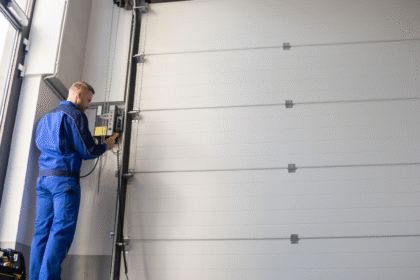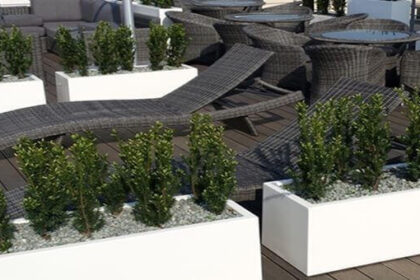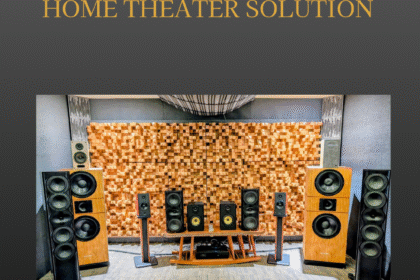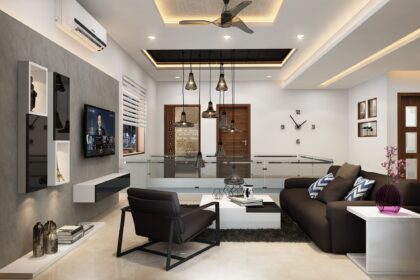Step into a modern residence, a boutique hotel, or a sleek corporate office, and you’ll notice a shift: the space feels open, serene, and sophisticated. This isn’t just the result of clever lighting or minimalist furnishings. Architects are harnessing large format tiles to transform interiors, creating environments that feel expansive and elegantly cohesive.
These oversized tiles, significantly larger than traditional ones, reshape surfaces by minimizing grout lines and creating smooth, continuous visuals. The effect is subtle yet profound: rooms appear larger, cleaner, and more unified. A small bathroom can evoke a spa-like tranquility, while a public lobby conveys grandeur without being overwhelming.
From Practical Roots to Design Innovation
Tiles have long been valued for their durability, water resistance, and ease of maintenance. Historically, their size was constrained by manufacturing and installation limitations, resulting in small, grid-like patterns in kitchens and bathrooms. Technological advancements have changed that. Stronger materials and improved production techniques now allow for large format tiles, initially developed for industrial floors but now a cornerstone of residential and commercial design.
Architects quickly saw their potential. Beyond their practical benefits, large format tiles offer a bold aesthetic, turning functional surfaces into key design elements that elevate entire spaces.
Amplifying the Sense of Space
Small tiles, with their many grout lines, create a textured, patterned look that can feel cozy but sometimes cluttered. Large format tiles, by contrast, streamline surfaces, reducing visual interruptions and enhancing the perception of space.
In compact areas, architects use these tiles strategically. A bathroom clad in oversized panels feels less confined, as the eye glides across smooth surfaces. In kitchens, large format tiles on floors and backsplashes create a seamless, polished aesthetic. In open-plan homes, they ensure continuity across expansive areas, tying together living, dining, and kitchen zones.
Practically, fewer grout lines mean less cleaning. Grout can trap dirt and moisture, but large format tiles minimize these trouble spots, making them ideal for busy households or high-traffic commercial spaces.
Expanding Creative Applications
Large format tiles first gained popularity for flooring, but their uses have evolved. Shower walls covered in just a few large panels evoke a luxurious, spa-like feel. In living rooms, fireplaces clad in oversized tiles become striking, sculptural focal points.
Some architects push further, using tiles to clad furniture like kitchen islands, which gain both durability and a bold aesthetic. Outdoors, porcelain large format tiles excel, resisting weather and UV exposure. This allows designers to create seamless transitions from indoor floors to patios, pool decks, or building facades.
Versatile Finishes for Every Style
The appeal of large format tiles extends beyond their size. They come in a wide range of finishes, from marble and stone effects for timeless elegance to concrete looks for modern minimalism and wood-like textures for warmth. When applied across large surfaces, these finishes amplify their impact.
Architects choose finishes to shape a room’s atmosphere. Polished tiles reflect light, brightening smaller or darker spaces. Matte surfaces create a soft, intimate feel. Textured options add depth, turning flat walls into dynamic features. This versatility makes large format tiles adaptable to styles from sleek urban lofts to cozy rural homes.
Residential and Commercial Uses
In homes, large format tiles enhance space and simplify upkeep. They make small bathrooms feel airy, kitchens look sleek, and living areas more cohesive. Homeowners appreciate the reduced cleaning effort thanks to fewer grout lines.
In commercial settings, durability and aesthetics are critical. Hotels, retail spaces, and office lobbies need surfaces that withstand heavy use while maintaining a premium appearance. Large format tiles deliver both, offering resilience and a polished look. A lobby with continuous stone-effect panels creates an immediate sense of sophistication and professionalism.
Navigating Installation Challenges
Working with large format tiles requires precision. Their size makes them heavy and difficult to handle, and even minor misalignments are noticeable. Specialized tools and skilled installers are essential for flawless results.
Architects emphasize professional installation. A tile shop in Singapore can supply the materials, but the outcome depends on the installer’s expertise. Many tile shops now partner with professionals trained in handling large formats, ensuring the design vision is executed perfectly.
Sustainability in Design
Large format tiles align with eco-conscious design. Many replicate natural materials like marble or wood without depleting those resources. Porcelain and ceramic options offer the look of luxury with a smaller environmental footprint. Their durability also reduces the need for replacements, supporting sustainable building practices.
The Tile Shop as a Starting Point
The journey often begins at a tile shop, where the scale and texture of large format tiles come to life. Online images can’t fully capture their impact—seeing them in person, feeling their finish, and observing how light interacts helps clarify choices. Tile shops also provide practical guidance: How are these tiles transported? What subfloor prep is needed? Who are the best installers? A reputable tile shop is a partner, connecting design inspiration with technical expertise.
A Subtle Design Revolution
Large format tiles don’t demand attention like vibrant colors or bold patterns. They work quietly, shaping the backdrop of a space. They create calm, open, and timeless environments, allowing furniture, lighting, or art to shine.
For architects, this understated power is key. Large format tiles offer durability, versatility, and a modern aesthetic, making them ideal for both homes and commercial projects. As tile shops expand their offerings and installation expertise grows, these tiles are becoming accessible to more people, moving from high-end designs to everyday spaces.
This subtle shift is evident in homes that balance style and practicality, in offices that need to impress, and in hotels where first impressions matter. Large format tiles are redefining interiors, proving that the simplest tools can have the most profound impact.




